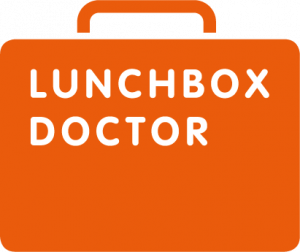
Teenage Skin – Foods To Consider
Introduction
Your skin is part of your immune system. Not only is it a barrier to bad bugs and bacteria, it also holds a lot of bacteria on its surface. These bacteria act as an army that defends your body against invaders. If these bacteria become imbalanced then they cannot fight off invaders and you can end up with spots. Added to that, too much oil (also known as sebum) in the skin means pores are more likely to get blocked, like the plug in a sink. That oil has to go somewhere and if it can’t be absorbed it will likely turn to spots. Teenage hormones cause more sebum to be produced and more oil to be retained on the surface of the skin and that’s why you tend to get more outbreaks as a teenager.
In the next ten minutes (or less if you’re a fast reader) you’ll learn how to restore the balance of bacteria on the skin, how to ensure the cells of your skin renew quickly so that you can clear up a bout of spots quickly and how to ensure you don’t get blocked pores.
So which foods can help balance teenage hormones, improve the rate of skin turnover and reduce the amount of oil produced and retained at the skin’s surface?
There are certain vitamins, minerals and nutrients that it is especially important to prioritise when making food and drink choices and of course if you are choosing a supplement or multivitamin to support your skin. If you do choose to go down this route, then I can certainly recommend some general supplements that combine probiotics, antioxidants, zinc and nutrients that are designed to help you balance the hormones your body produces. However, pills and supplements don’t fix everything, and diet is so important. Now’s the time to get it right.
SUGARS AND REFINED CARBS
Your body’s preferred fuel source is glucose – a type of sugar – which it needs for energy just as a car needs petrol. Glucose is released from your food and then is carried in the blood. The main source of glucose in the modern western diet is from carbohydrate-based foods, in particular refined grains such as bagels, cakes, white bread, doughnuts, biscuits and sweets.
Refined carbohydrate-based foods raise blood sugar levels significantly more than proteins or fats. A significant rise in blood sugar tends to pre-empt a significant drop as the body tries hard to normalise blood sugar levels. As the body tries to raise your blood sugar levels again it produces stress hormones that are linked to increased sebum (oil) production in the skin. More sugar = more oil = more spots!
Action – if you want to try and stop this from happening then try to reduce refined grains and sugars but also make sure you plan your meals around protein-rich foods such as chicken, fish, meat, pulses, nuts, seeds and/or some dairy foods. Also ensure you are not skimping on good quality fats. What are these? Basically, any fat that comes in natural form i.e. not processed food or junk foods but nuts, nut butters, avocado, olive oil, real butter (not spread), seeds, the naturally occurring fat in meat and oily fish are all good sources.
EAT A RAINBOW
The brighter coloured vegetables and fruit tend to contain the largest amounts of antioxidants. The simplest way to explain what these do is that they’re like the pacman (I am sure you are familiar with that game) that goes around the body eating up the dots (in this case the overabundant free radicals). Too many free radicals in the case of acne means more spots. Note: free radicals are not bad guys all the time but in too large a number they can cause localised outbreaks of spots and these can be targeted by eating antioxidant-rich foods. So the more vegetables you can get into your diet the less spots you are likely to have. Fruit is good too but try and keep to a ratio of 3:1 vegetables to fruit to ensure a balance of nutrients.
EAT GOOD FATS
You might be thinking that if too much oil in the pores causes spots you shouldn’t be eating fat but you’d be wrong! It’s just that there are some fats that help reduce spots and some that don’t help the situation at all. Good fats include omega 3 rich oily fish i.e. salmon, mackerel, sardines and anchovies, but also nuts, seeds and their oils. Adding ground flaxseeds or chia seeds to your porridge is a great start to the day. Equally eating half an avocado, a day, using olive oil on your salad, eating real butter on your sourdough toast and dipping your apple wedges in nut butter are all healthy and anti-acne options to choose. If you are not a fan of oily fish on its own, then fishcakes and pates are a great way to enjoy them. If that is a stretch too far then there are some great fish oil supplements on the market. See ‘Supplements’ below.
CREATE BALANCE ON THE INSIDE
You may have read about something called the ‘Microbiome’. That’s the community of bacteria living in your gut. What we all need to aim for is a good balance of bacteria on the inside as well as the outside. The frustrating news is if you were born via c-section and/or were not breast-fed, if you had a lot of antibiotics as a child or if you suffer from atopic ailments such as asthma and eczema, you are going to have to work a little harder in this area to restore balance. That’s not to say it cannot be done. Something that goes some way to helping is the introduction of some fermented foods or drinks. These may sound new and faddy but they’ve been around for centuries. The tastiest place to start is probably milk kefir which you can buy in supermarkets and tastes like a drinking yogurt, kombucha which is a slightly tart fizzy drink, or miso soup which is salty and delicious and can be made by simply adding water rather like a healthier cup-a-soup. Other fermented foods include sour cream, crème fraiche, yogurt, tabasco sauce, fish sauce (traditional), kimchi, sauerkraut, tempeh and soy sauce. Another beneficial change can be a move from any other kind of bread to traditional sourdough. Although sourdough is not a probiotic food it is made using fermenting principles and that makes it a lot easier for you to digest and a lot less taxing on the gut which could ultimately help your skin too.
It is a little-known fact that just 4% of teenage girls in the UK get enough fibre in their diet. Teenage boys are not doing much better. Fibre is really important in keeping your microbiome balanced and healthy. It’s fibre or what is known as prebiotics that provide the fuel for probiotic bacteria (the good guys). Where can you find the sort of fibre that could help? The obvious place to start is vegetables and fruit again but less obviously perhaps is cold or even cooked and reheated pasta, rice and potatoes. The cooling and reheating process creates something called ‘resistant starch’ which we know now helps fuel probiotics. Also, pulses such as lentils and chickpeas as well as wholegrains such as oats and pseudo grains such as quinoa and buckwheat.
Finally, both Vitamin C and Zinc can help in clearing up old spots and making sure you don’t end up with marks left on your skin forevermore. They’re both associated with wound healing. So where do you find vitamin C? Well, look for a wide variety of brightly coloured fruit and vegetables again. Zinc is not only associated with wound healing but also reducing excess sebum. Look at including nuts, seeds, yogurt and shellfish in your diet. Some suggestions include apple wedges with nut butter, adding seeds to porridge or in baking, a little dark chocolate from time to time and some Greek yogurt with berries.
CHEW YOUR FOOD
There are many things you can do to increase your ability to absorb as much goodness as possible from your food, and the easiest of these is to chew your food. I know it sounds silly but remember that the first place digestion starts is in the mouth.
This is the only chance you have to mechanically break down your food. Once it’s been swallowed, the body can only use digestive enzymes, acids and probiotics to further break food down because there are no teeth in your stomach. Large pieces of food take much longer to break down than small, well chewed pieces. We want food to be absorbed as quickly as possible to ensure that it doesn’t sit in the gut and ferment, which can then cause unpleasant gas and bloating as well as worsening skin health.
SUPPLEMENTS
Whilst supplements don’t fix everything, they can support your dietary changes, creating a better, longer lasting result.
The multivitamin complex that I recommend is Viridian Clear Skin Complex. It is a combination of probiotics, antioxidants, zinc and nutrients that are designed to help you balance the number of hormones your body produces.
If you would like to start supplementing omega 3’s then I can recommend Bare Biology Omega 3’s, however for vegetarian’s I recommend Higher Nature Flax Oil Capsules.
It’s also worth looking at supplementing some prebiotics such as Bimuno to support the growth of bifidobacteria. Adding some prebiotic fibre is not only necessary but as this particular type of prebiotic has been linked with reduced inflammation it is ideal for those with outbreaks of spots. Bimuno can be added to hot food and drinks too which makes it easy to take.
SKINCARE
It is tempting to try and find any number of commercially available solutions to spotty skin. However, it’s clear that a lot of the ingredients, whilst helping to remove spots in the short term, are not helping to address the underlying cause. Hit The Spot by Active Silver is based around the healing properties of colloidal silver and aloe vera. Colloidal Silver is naturally anti-bacterial. It comes in a paste form that can be applied by blobbing it onto a spot or rubbing it across an area of spots. It is great for zapping acne spots and is full of Zinc and Colloidal Silver to help heal up whole areas of spots or individual blemishes. It can also be used under makeup if rubbed in well (it gives you a matt finish for the make up to sit on top). This means your skin will be in contact with the Hit the Spot cream acting as a barrier to the makeup.
To get 10% off Active Silver products, use the coupon code SKIN10 at the check out. This is valid until 31 May 2020.
RECIPES
I am attaching some recipes below for you to try at home. They’re super simple and you need only a food processor or NutriBullet/Ninja.
Fruity Kefir Shake
Ingredients
250ml kefir
100g frozen fruit
100g fresh fruit
squeeze of yacon syrup – this is a prebiotic syrup and can be purchased from Indigo Herbs (you could use a little raw honey instead)
Instructions
Add everything to a food processor or ‘bullet’ style smoothie maker.
Blend on high.
Pour into an insulated bottle and shake before drinking.
Red Pepper Hummus
Ingredients
1 x 410g tin of chickpeas, drained
About ¾ of a jar of roasted red peppers, drained
Juice of 1 lemon
2 tbsp tahini (sesame seed paste)
½ a large garlic clove, minced
2 tbsp olive oil, plus more for serving
½ – 1 tsp salt
½ tsp ground cumin
2 – 3 tbsp water
Dash of ground paprika for serving
Instructions
Put all of the ingredients into a food processor and blend until smooth.
Serve with crackers or dip raw vegetables into the hummus.
